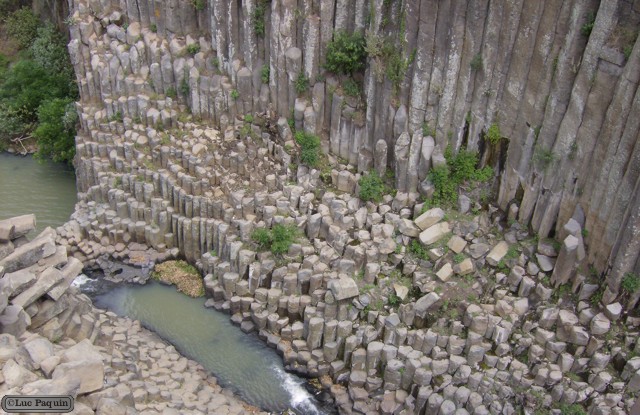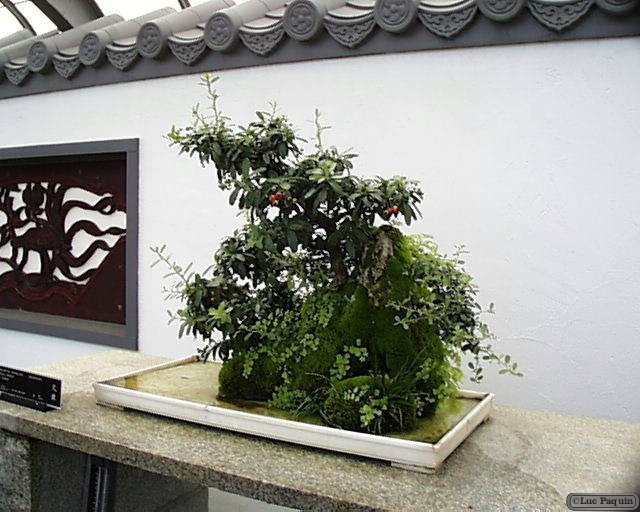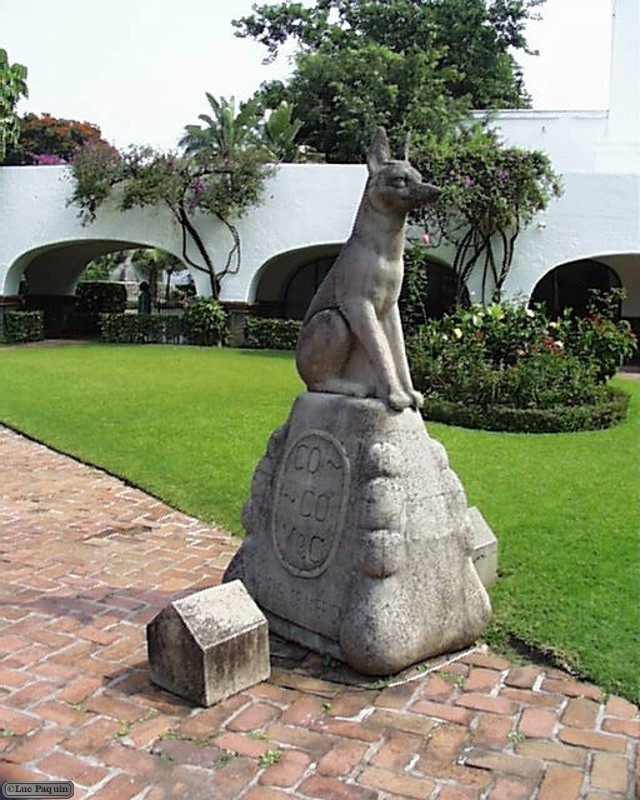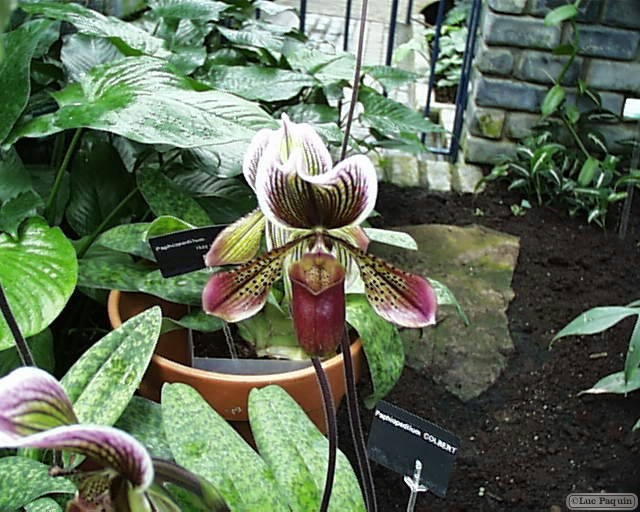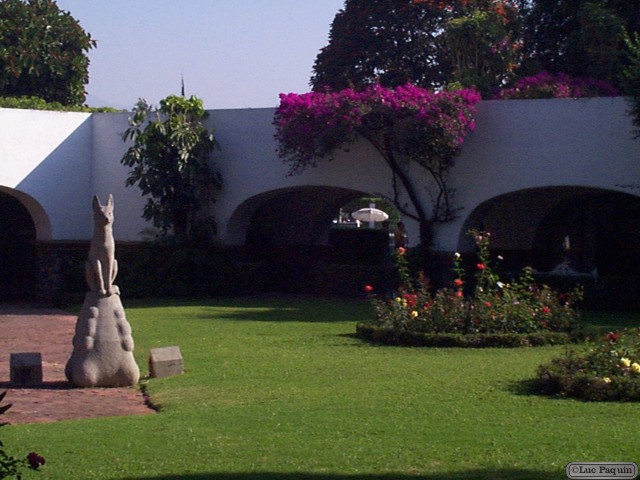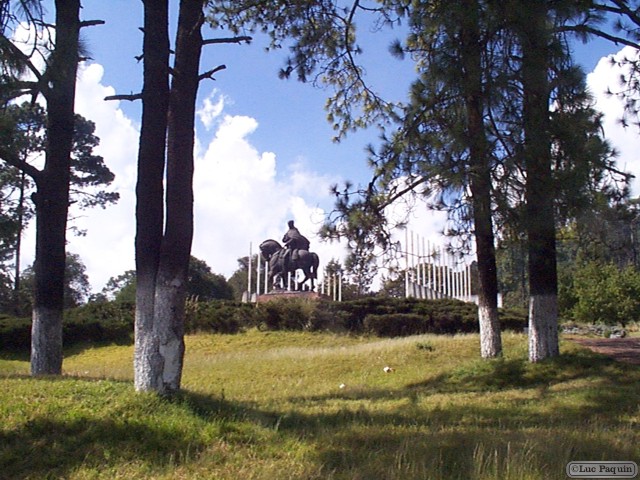Photo
Photos
Year: 2005 (June 02, 2005)
11″ x 8.5″
Media: Canon® Pro Platinum High Gloss Photo Paper
Printers: Canon® PIXMA
Color
Art: Photo
Artist: Luc Paquin
Teotihuacan
The name Teotihuacan was given by the Nahuatl-speaking Aztec centuries after the fall of the city. The term has been glossed as “birthplace of the gods”, reflecting Nahua creation myths that were said to occur in Teotihuacan. Teotihuacan is a Nahuatl (Aztec) name meaning “place where gods were born”. Nahuatl scholar Thelma D. Sullivan interprets the name as “place of those who have the road of the gods.” This is because the Aztecs believed that the gods created the universe at that site. The name is pronounced in Nahuatl, with the accent on the syllable wa. By normal Nahuatl orthographic conventions, a written accent would not appear in that position. Both this pronunciation and Spanish are used, and both spellings appear in this article.
Luc
Year: 2004 (March 18, 2004)
11″ x 8.5″
Media: Canon® Pro Platinum High Gloss Photo Paper
Printers: Canon® PIXMA
Color
Art: Photo
Artist: Luc Paquin
Mercado de Jamaica
The market sells a number of other products besides plants and flowers. There are 312 stands dedicated to other merchandise such as produce, meat, groceries and other items, as a major supplies of basic staples in the area. Most of the meat sold is common, but unusual animals such as frogs and chichicuilotes (a type of native bird) can be found as well. One section sells live animals, both as pets and certain farm animals such as chicks and full grown hens and roosters. The market is also one of the major sellers of Christmas trees in the city. Most of the species sold are not native to Mexico and many are imported as they are considered to have better foliage and are usually cheaper.
Mango
The mango is a juicy stone fruit belonging to the genus Mangifera, consisting of numerous tropical fruiting trees, cultivated mostly for edible fruit. The majority of these species are found in nature as wild mangoes. They all belong to the flowering plant family Anacardiaceae. The mango is native to South and Southeast Asia, from where it has been distributed worldwide to become one of the most cultivated fruits in the tropics. The center of diversity of the Mangifera genus is in India.
Luc
Year: 2007 (March 25, 2007)
11″ x 8.5″
Media: Canon® Pro Platinum High Gloss Photo Paper
Printers: Canon® PIXMA
Color
Art: Photo
Artist: Luc Paquin
Huasca de Ocampo
Prismas Basálticos
Basalt is a dark, fine-grained, basic (low silica) igneous rock, often extruded as molten lava from volcanic fissures. Its low silica content means it can flow easily, often building up over the years to form large plateaus. As the basaltic lava cools, it contracts and solidifies. An extensive network of cracks often develop in basalt, which may extend many meters deep. These cracks tend to leave columns between them which are roughly hexagonal (6-sided) in shape.
The best known location in Mexico to see basalt columns is about an hour’s drive north of Mexico City, at Santa María Regla, in the state of Hidalgo. These columns, attractively located on the side of a canyon, with a waterfall tumbling over some of them, were visited by the famous Prussian scientist/geographer Alexander von Humboldt, during his exploration of Mexico in 1803-04. Some individual columns are 40 meters tall.
Luc
Year: 2007 (March 25, 2007)
11″ x 8.5″
Media: Canon® Pro Platinum High Gloss Photo Paper
Printers: Canon® PIXMA
Color
Art: Photo
Artist: Luc Paquin
Huasca de Ocampo
Prismas Basálticos
Allow yourself to be surprised by the natural beauty of the Basaltic Prisms, rock formations carved by water over millions of years, thus achieving a perfect geometric structure. Located just 30 minutes from Pachuca, Hidalgo’s capital, in the town of Santa María Regla, these stone columns are one of the 13 natural wonders of Mexico. Surrounded by forests and lush vegetation, the prisms are perfect to go hiking, or taking trips in hot air balloons and camping, and are a “must visit” landmark in Hidalgo. They are 40 meters high and their flanks are washed by the Azul and San Antonio Regla dams, offering a natural sight that has long impacted local and foreign visitors.
Wander among its rocks, get wet in the waterfall created by spring water, and later, enjoy a picnic in the nearby green areas. There, you will be able to spend a day full of intense adventure with your family, and when the sun goes down, prepare you tent and spend the night in the valley, surrounded by the forest and enjoying the beautiful view.
Luc
Year: 2007 (March 25, 2007)
11″ x 8.5″
Media: Canon® Pro Platinum High Gloss Photo Paper
Printers: Canon® PIXMA
Color
Art: Photo
Artist: Luc Paquin
Huasca de Ocampo
Prismas Basálticos
Los Prismas Basálticos (The Basalt Prisms) are tall columns of basalt rock that line a ravine through which water runs from the San Antonio Dam. This ravine area was part of the Santa María Regla Hacienda and was first promoted by Alexander von Humboldt in 1803.
The walls of the canyon, called the Barranca de Alcholoya, are lined by polygonal columns between thirty and fifty meters high with five or six sides. The basalt columns were created by the slow cooling of volcanic lava. The visible columns are backed by even more polygonal basalt columns. There are two waterfalls. The higher one has its water supplemented by diversions from nearby dams. The lower one is called the Cascada de la Rosa. The canyon has been prepared by the addition of stairs, walkways and hanging bridges for easy access.
Luc
Year: 1998 (July 22, 1998)
11″ x 8.5″
Media: Canon® Pro Platinum High Gloss Photo Paper
Printers: Canon® PIXMA
Color
Art: Photo
Artist: Luc Paquin
Montreal Botanical Garden
The Chinese Garden
The Chinese Garden is constructed along the traditional lines for a Ming Dynasty Chinese garden. Covering 2.5 hectares, it has many winding paths, an artificial mountain, and a building in the Chinese style housing a collection of bonsai and penjing that have been donated. The garden is populated with Chinese plants. The garden was constructed from 1990-1991 by 50 artisans from the Shanghai Institute of Landscape Design and Architecture, directed by Le Weizhong. The project required 120 containers of material imported from Shanghai, including 500 tonnes of stone from Lake Tai in Jiangsu province.
Luc
Year: 1998 (November 13, 1998)
8.5″ x 11″
Media: Canon® Pro Platinum High Gloss Photo Paper
Printers: Canon® PIXMA
Color
Art: Photo
Artist: Luc Paquin
Hotel Hacienda Cocoyoc
Coyote
The coyote (Canis latrans) is a canid native to North America. It is a smaller, more basal animal than its close relative, the gray wolf, being roughly the North American equivalent to the old world golden jackal, though it is larger and more predatory in nature. It on account of its wide distribution and abundance throughout North America, even southwards through Mexico and Central America. It is a highly versatile species, whose range has expanded amidst human environmental modification. This expansion is ongoing, and it may one day reach South America, as shown by the animal’s presence beyond the Panama Canal in 2013.
The ancestors of the coyote diverged from those of the gray wolf, 1-2 million years ago, with the modern species arising in North America during the Middle Pleistocene. It is highly flexible in social organization, living either in nuclear families or in loosely-knit packs of unrelated individuals. It has a varied diet consisting primarily of animal matter, including ungulates, lagomorphs, rodents, birds, reptiles, amphibians, fish and invertebrates, though it may also eat fruit and vegetable matter on occasion. It is a very vocal animal, whose most iconic sound consists of a howl emitted by solitary individuals. Humans aside, cougars and gray wolves are the coyote’s only serious enemies.
The coyote is a prominent character in Native American folklore, usually depicted as a trickster who alternately assumes the form of an actual coyote or a man. As with other trickster figures, the coyote acts as a picaresque hero which rebels against social convention through deception and humor. The animal was especially respected in Mesoamerican cosmology as a symbol of military might, with some scholars having traced the origin of the Aztec god Quetzalcoatl to a pre-Aztec coyote deity. After the European colonization of the Americas, it was reviled in Anglo-American culture as a cowardly and untrustworthy animal. Unlike the gray wolf, which has undergone a radical improvement of its public image, cultural attitudes towards the coyote remain largely negative.
Luc
Year: 1998 (July 22, 1998)
11″ x 8.5″
Media: Canon® Pro Platinum High Gloss Photo Paper
Printers: Canon® PIXMA
Color
Art: Photo
Artist: Luc Paquin
Montreal Botanical Garden
Lady’s Slipper Orchids
Lady’s slipper orchids are orchids in the subfamily Cypripedioideae. They are characterised by the slipper-shaped pouches (modified labellums) of the flowers – the pouch traps insects so they are forced to climb up past the staminode, behind which they collect or deposit pollinia, thus fertilizing the flower. Unlike other orchids, Cypripedioideae have two fertile anthers – they are “diandrous”.
The Cypripedium genus is found across much of North America, as well as in parts of Europe and Asia. The pink lady’s slipper is also the official provincial flower of the Canadian province of Prince Edward Island.
Paphiopedilums are found in the tropical forests of southeast Asia reaching as far north as southern China. Paphiopedilum is quite easy to cultivate and therefore is popular among orchid enthusiasts. In fact, overcollecting of this genus has been so extensive that many species are now sub-viable in their natural habitats. Phragmipedium, found across northern South and Central America, is also easy to cultivate as it requires lower temperatures than Paphiopedilum, eliminating the need for a greenhouse in many areas.
The lady’s slipper is also known in the United States of America as the moccasin flower, from its resemblance to a moccasin.
Luc
Year: 2000 (November 25, 2000)
11″ x 8.5″
Media: Canon® Pro Platinum High Gloss Photo Paper
Printers: Canon® PIXMA
Color
Art: Photo
Artist: Luc Paquin
Hotel Hacienda Cocoyoc
Cocoyoc is a Nahuatl word that means “the place of coyotes”. The town of Cocoyoc is many centuries old and existed long before the Spanish conquest. It was founded in the eleventh century by the Tlahuican, another Nahuatl group, two hundred years before the Aztecs became the dominant group of the Nahuatls and established their capital — Tenochtitlan — where Mexico City now stands.
Huitzihuitl, the second king of the Aztecs, conquered Cocoyoc, as he became impressed by its excellent weather, fertile land and lush vegetation, taking as his wife the daughter of the conquered lord. Of this marriage, Moctezuma I was born, who goberned the Aztec Empire from 1440 to 1469. Moctezuma I, attracted by his mother’s land, ordered extensive gardens to be planted near Cocoyoc — bringing flowers, trees and bushes from all over the country. He had royal baths constructed for his own use and would go there to escape from state affairs; to relax in the sun and the peacefull atmosphere of Cocoyoc.
Cocoyoc was part of the vast territory given to Hernan Cortes after the Conquest of Mexico in 1521. He was named Marquis of Oaxaca in recognition of his services to the Spanish crown and then proceed to establish a firm hold on the land. Cortes also married Isabel, daughter of Moctezuma II, who was the Aztec ruler at that time. Soon thereafter, the fertile land of the valley and of all the State of Morelos was planted with sugar cane, which had been introduced by the Spaniards.
Luc
Year: 2000 (November 24, 2000)
11″ x 8.5″
Media: Canon® Pro Platinum High Gloss Photo Paper
Printers: Canon® PIXMA
Color
Art: Photo
Artist: Luc Paquin
Cuernavaca-Ciudad De Mexico 95D
Jose Maria Morelos – Monument to Morelos, Morelos
José María Teclo Morelos y Pavón (September 30, 1765, City of Valladolid, now Morelia, Michoacán – December 22, 1815, San Cristóbal Ecatepec, State of México) was a Mexican Roman Catholic priest and revolutionary rebel leader who led the Mexican War of Independence movement, assuming its leadership after the execution of Miguel Hidalgo y Costilla in 1811. He was later captured by the Spanish colonial authorities and executed for treason in 1815.
Luc




